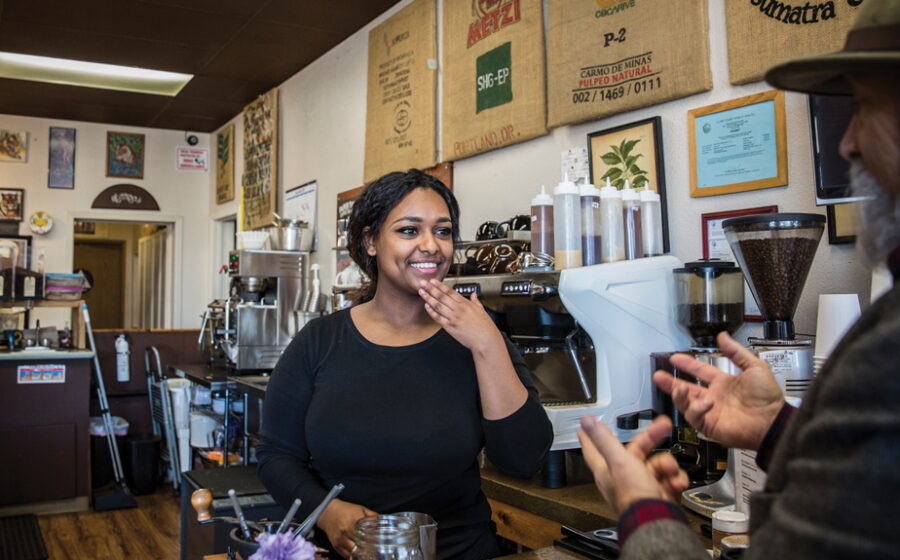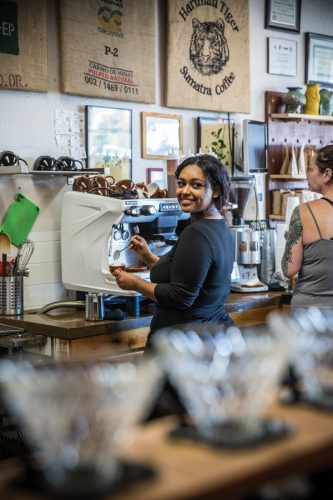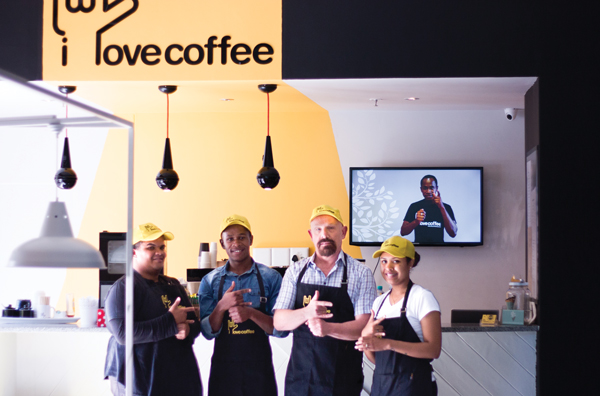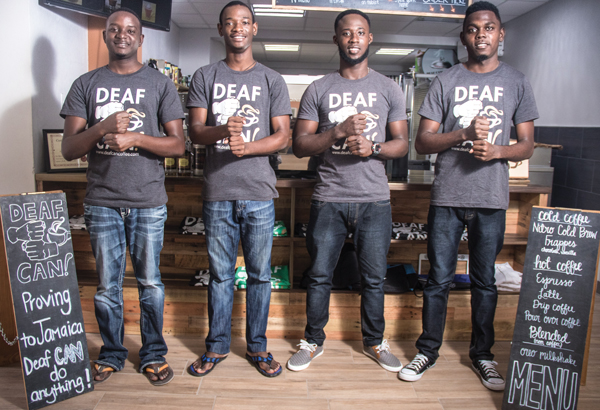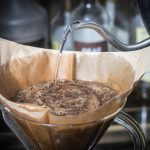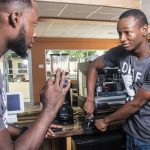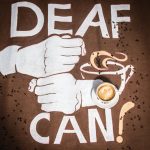When I walk up to Pepperbox Coffee, a trailer parked by a gas station in Austin, Texas, the barista hands me a laminated order card and dry erase marker. I scan the menu, which includes cleverly named drinks like the Gold Digger (iced caramel latte with gold flakes) and the Dirty Harry (chai and espresso), before settling on a small iced chai. He writes out the total before swiping my credit card. As I gather my card and drink, he thanks me in American Sign Language, gesturing with one hand waving from his mouth towards me.
Pepperbox’s slogan is “Coffee with a bang,” more a nod to its Wild West theme and strong espresso than an actual sound. Pepperbox is Austin’s first Deaf-owned coffee business, and it’s one of several coffee ventures around the world employing Deaf baristas.
Co-owners Nicholas Buchanan and Mario Essig opened Pepperbox in February 2017. “We at first tried using a customer-facing ordering kiosk app, but it had a few problems,” writes CEO Buchanan in an email. “The most significant issue was it was not designed exclusively for our shop, as it was a generic app without any taste for specific controls. We wanted to create our own app; however, we’ve had to put that on hold for now.”
In the meantime, the laminated order card system seems to work well for customers walking or driving up. “We strive to be as organic as possible in communication with our customers, creating a natural synergy through gesturing and card ordering based on drink selection,” Buchanan explains.
Pepperbox sources coffee beans from Monteverde Plantation in Monteverde, Costa Rica, and the company recently launched an online subscription service for ordering coffee beans. Buchanan says the response from the local community has been great. “We have received many positive feedbacks on how different the concept is—not just the menu, but also our service using Deaf baristas,” he adds.
HIRING THE HARD OF HEARING
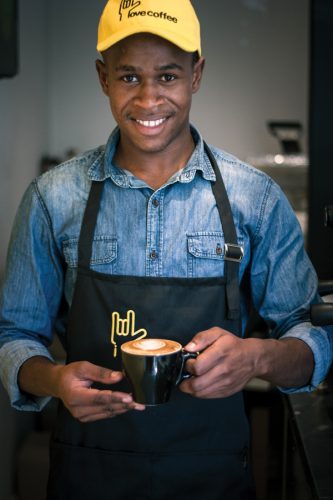
Even with the protections of the Americans with Disabilities Act, the Deaf community lags behind the general population in its rate of employment. According to 2015 data from the U.S. Census Bureau, just over half (51 percent) of civilians with hearing issues were employed, and that number doesn’t account for the under-employed, those with hearing issues who are employed but in jobs below their abilities.
Elsewhere in the world, job opportunities for the Deaf community can be even more rare, but other coffee ventures aim to combat unemployment and reduce stigma. I Love Coffee in Cape Town, South Africa, launched in June 2016 and recently opened a second location in May.
When owner Gary Hopkins learned about the challenges facing South Africa’s Deaf community, he brainstormed ventures that could help. He worked with South Africa’s National Institute for the Deaf to launch the country’s first Deaf-run coffee shop.
“South African sign language isn’t recognized as a language,” Hopkins explains. “People have very little understanding of sign language. What was the easiest way to break the communication barrier? Sign language around coffee is relatively simple and [coffee is] what everyone loves. The idea leant itself very easily to a coffee shop.”
Of the original three Deaf baristas hired, one remains with I Love Coffee and the other two have left to pursue other interests, but Hopkins puts a positive spin on barista turnover. “For us it’s very much a springboard,” he says. “A lot of our Deaf community have no opportunities available to them.”
Both locations are in office buildings to give employees exposure to other types of jobs. I Love Coffee’s first location inside of a gym, which was later demolished, featured a sign telling customers how to order from a Deaf person. “Look us in the eye and speak normally, point at the menu,” Hopkins explains. “We have a video that plays in the store which very easily teaches people how to sign for a cappuccino [or other drinks]. Most of our customers sign, but there are those that just point. Our baristas are able to lip read.”
In addition to I Love Coffee’s two locations, Hopkins says they also plan to open a roaster that will employ more Deaf people. “To roast coffee quires auditory skill [for first crack],” he explains, “but we’ve designed a solution that allows someone who’s Deaf to roast coffee.”
CHALLENGING MISCONCEPTIONS
Deaf Can! Coffee in Kingston, Jamaica, is a Deaf-run roaster and mobile coffee shop that operates out of the Caribbean Christian Centre for the Deaf. Blake Widmer, who cofounded Deaf Can! with his wife, Tashi, says they hope to open a brick-and-mortar location in the future.
For now, several of the Deaf baristas who’ve completed a coffee-training program alternate shifts at the nearby Café Vita. Early on, when the manager at Café Vita wanted to communicate with Deaf baristas, she’d ask Widmer to interpret. Now the Deaf and hearing employees at Café Vita use the WhatsApp messenger on their phones to communicate directly.
When I Skype with Widmer and several of Deaf Can!’s employees, they were excited to share how well the concept works in challenging local preconceptions of Deaf people. “A lot of times people are shocked to see us doing something so professionally,” signs barista and baker Andreen Smith while Widmer interprets. “We use a visual menu. I take their order on a Square tablet and people find that attitudes are changing.”
Of course, miscommunications can happen when customers don’t know coffee terms. Smith recalls hearing a customer who wasn’t expecting his espresso to be so small. “The guy thought I was cheating him,” she says. “He thought it was a sample. I pulled it up on my phone and suggested trying an Americano. I just had to use a visual menu to teach him the difference between an Americano or a latte.”
Before we sign off, Deaf Can!’s employees teach me the sign for coffee: One hand holds steady while the other pantomimes grinding coffee beans in a circular motion—visually captured in Deaf Can!’s logo.
However you say it, coffee serves as a universal language.



